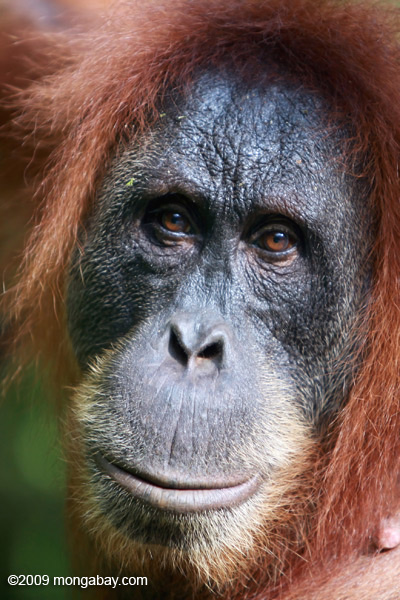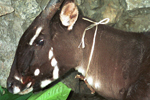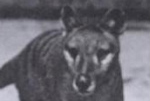View Larger Map
Abakan Mountain range where yeti conference says the beast is likely hiding.
A conference has announced that given recent evidence they are 95 percent convinced the yeti, a mythical or perhaps actual primate, exists in the cold wilds of Siberia. Scientists and cryptozoologists (those who have a fascination for the ‘study of hidden species’ such as Bigfoot) met in the Kemerovo region of Russia to exchange information on the yeti, also known as the Abominable Snowman, and to conduct fieldwork. According to a statement from the conference, members found new evidence of the yeti’s cryptic existence.
“During an expedition to the Azasskuyu cave, conference members collected irrefutable evidence of the habitation of the Snow Man in the Shoria Mountains. They found his footprints, his supposed bed, and various markers with which the yeti marks his territory,” reads a statement from the conference.
A Russian scientists, Anatoly Fokin, also found several hairs that he said may belong to the yeti. ‘Yeti hairs’ collected in the Himalayas recently turned out to be those of a goral, a wild ungulate. The hairs from Russia will be analyzed as well.
 An orangutan in Sumatra. If the yeti did exist would it be more related to the orangutan or humans? In addition, some cryptozoologists believe there is a large undiscovered ape in Sumatra, dubbed the orang pendak. Photo by: Rhett A. Butler. |
Conference members, however, did not come away with photographs, video, or most importantly for skeptics an actual yeti—living or dead—to prove its existence, but still stated there was 95 percent certainty of its existence.
Some media outlets have labeled the conference largely a publicity stunt to attract tourists to the remote region, currently dominated by coal and metal industries. Conference members came from as far afield as the US, Canada, Spain, Sweden and Mongolia.
However, some well-respected scientists, such as Jane Goodall, have said it’s possible a large undiscovered primate still exists and is the source of sightings around the yeti, sasquatch, or Sumatra’s orang pendak.
Although newly discovered mammals are usually rodents or bats, there have been new monkeys discovered in Africa, Asia, and South America recently. Still these are small animals, nothing close to the reputed size of a yeti.
“We have concluded that these living beings are in principle human beings because they can even talk and communicate with people,” Igor Burtsaev who initiated the conference recently said. “They are another species that differ from us, of course. Yetis are well adapted to nature. Their life style is similar to that of animals. They do not use tools, clothes or fire but are quite intelligent.” Burtsaev believes these ‘beings’ may be long-surviving populations of Neanderthals, which most scientists say went extinct over 30,000 years ago.
The conference was the first in half a century to bring yeti experts together. There is talk of creating a yeti research center in Russia.
Related articles
The saola: rushing to save the most ‘spectacular zoological discovery’ of the 20th Century

(04/04/2011) The saola (Pseudoryx nghetinhensis) may be the most enigmatic, beautiful, and endangered big mammal in the world—that no one has ever heard of. The shy ungulate looks like an African antelope—perhaps inhabiting the wide deserts of the Sahara—but instead it lives in the dense jungles of Vietnam and Laos, and is more related to wild cattle than Africa’s antelopes. The saola is so unusual that is has been given its own genus: Pseudoryx, due to its superficial similarities to Africa’s oryx. In the company of humans this quiet forest dweller acts calm and tame, but has yet to survive captivity long. Yet strangest of all, the 200 pound (90 kilogram) animal remained wholly unknown to science until 1992.
Hairy enigma of the Serengeti photographed again
(11/29/2010) A mysterious—and extremely hairy—animal has been photographed again in the Serengeti. Robert Berntsen, a frequent traveler to East Africa, photographed the creature, almost certainly a gazelle, in Kenya’s Masai Mara Reserve. It was earlier photographed by Paolo Torchio in the same reserve.
Mystery of the chupacabra monster likely solved
(10/22/2010) The mystery of the legendary chupacabra, a beast that is said to drain the blood of domestic animals at night, has been solved according to a scientist at the University of Michigan.
Beyond bizarre: strange hairy antelope photographed in Kenya

(08/19/2010) Is it a hairy goat roaming the plains? An antelope with some genetic mix-up? At this point no one knows. This strange creature was photographed in Kenya’s Masai Mara National Reserve. Apart of the Serengeti plains, the Masai Mara covers 1,500 square kilometers and is home to a wide-range of iconic African savannah species, from elephants to lions and giraffes to hippos.The photos were first published on conservation organization WildlifeDirect’s website.
Photo: Mystery ‘alien-beast’ in Panama is likely a sloth
(09/19/2009) The ‘mystery alien-beast’ discovered by four teens in a community in Panama and widely reported in the media over the past few days is likely a deformed sloth.
Time to give up on Tasmanian tiger, says DNA expert

(03/02/2009) Money and energy spent on finding the Tasmanian tiger should be used for other conservation purposes, according to Dr. Jeremy Austin from the University of Adelaide’s Centre for Ancient DNA. The Tasmanian tiger, or Thylacine, has captured the imagination of cryptozoologists ever since the last known individual died in the 1936 in the Hobart Zoo, which closed the next year. There have been several unreported sightings throughout the island since the 1930s, including inconclusive photos taken by German tourists.
Photos of ‘100-foot monster snake’ surface
(02/20/2009) A photo of ‘100-foot monster snake’ that has surfaced on the Internet and is certainly fake has stirred up a lot of interest in recent days, reports the Telegraph Online.
Yeti ‘proof’ actually belongs to cliff-dwelling goral
(10/14/2008) In 2003 an Indian forester claimed to have seen a Yeti three days in a row. Dipu Marak, general secretary of the Achik Tourism Society and Yeti enthusiast, followed the man’s trail and discovered strands of hair that he believed belonged to the mysterious creature. According to popular tradition, the Yeti is an ape-like animal that lives in the Himalayan forests.
Bigfoot “discovery” looks to be a hoax
(08/18/2008) A much-hyped press conference claiming to present evidence of the existence of Bigfoot offered little in the way of proof but a lot of shameless self-promotion by the “discoverers”.
Chupacubra is actually a hairless coyote
(11/02/2007) DNA analysis has identified the creature discovered on a Texas ranch as nothing more than a coyote, according to the Associated Press. The animal may have had mange or another sickness or disorder.